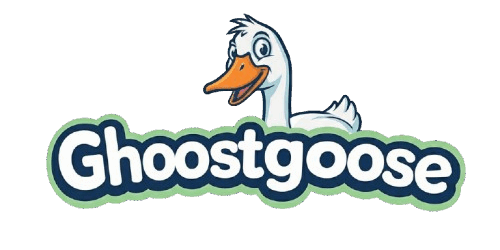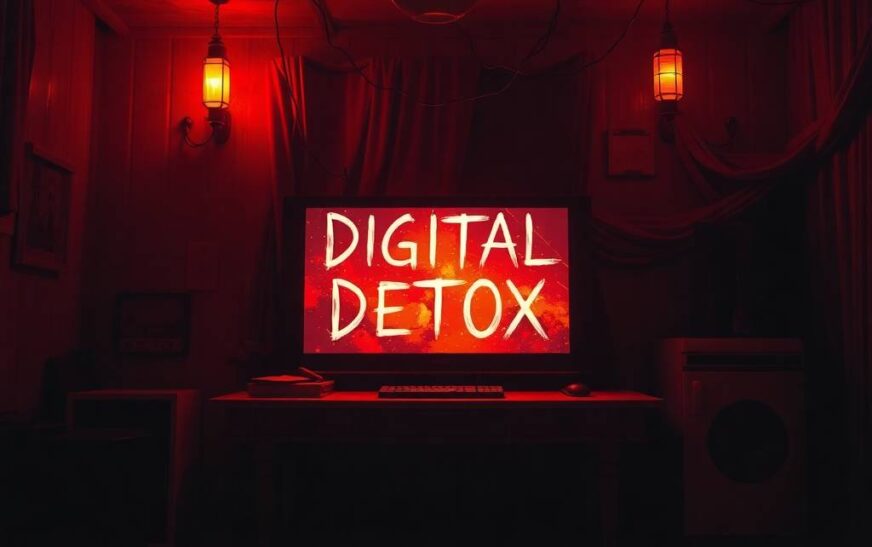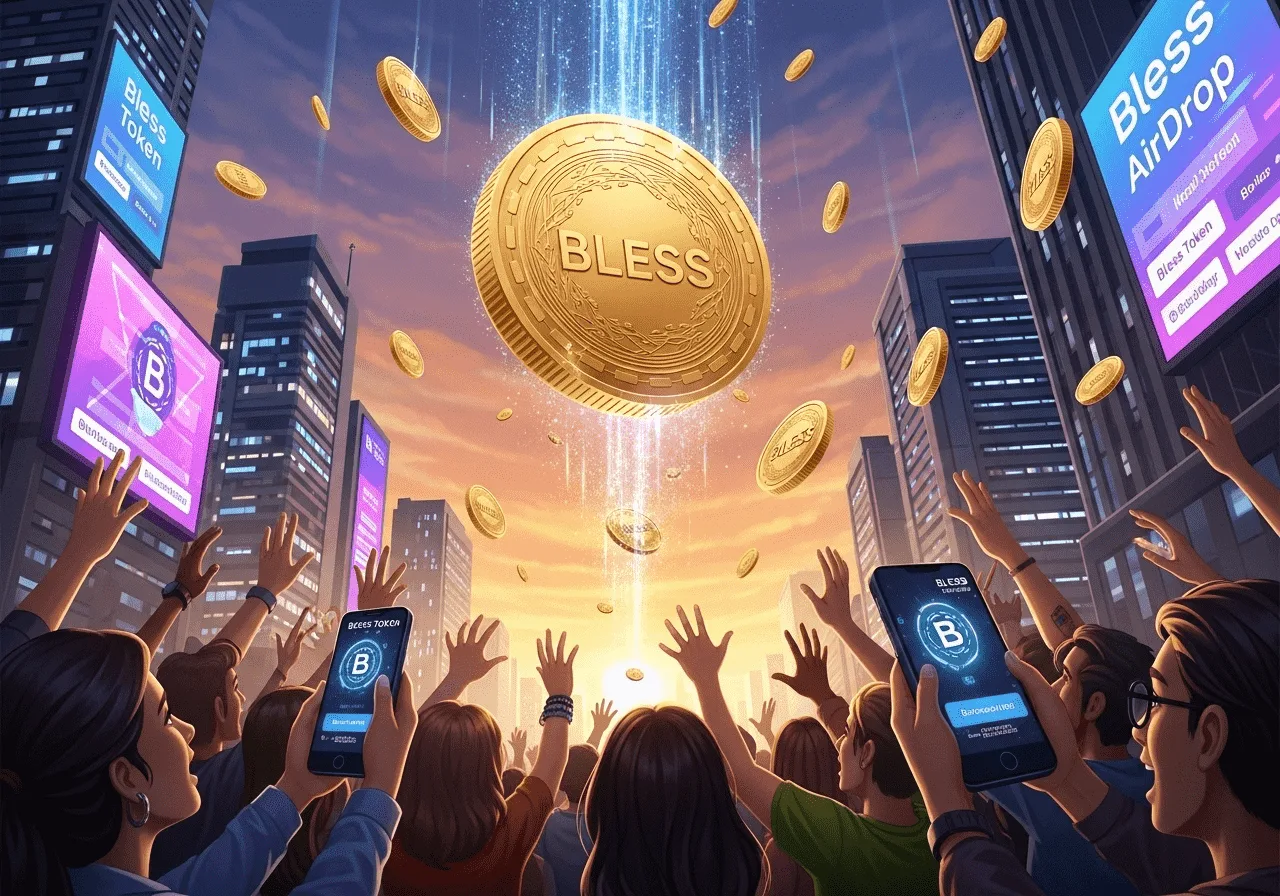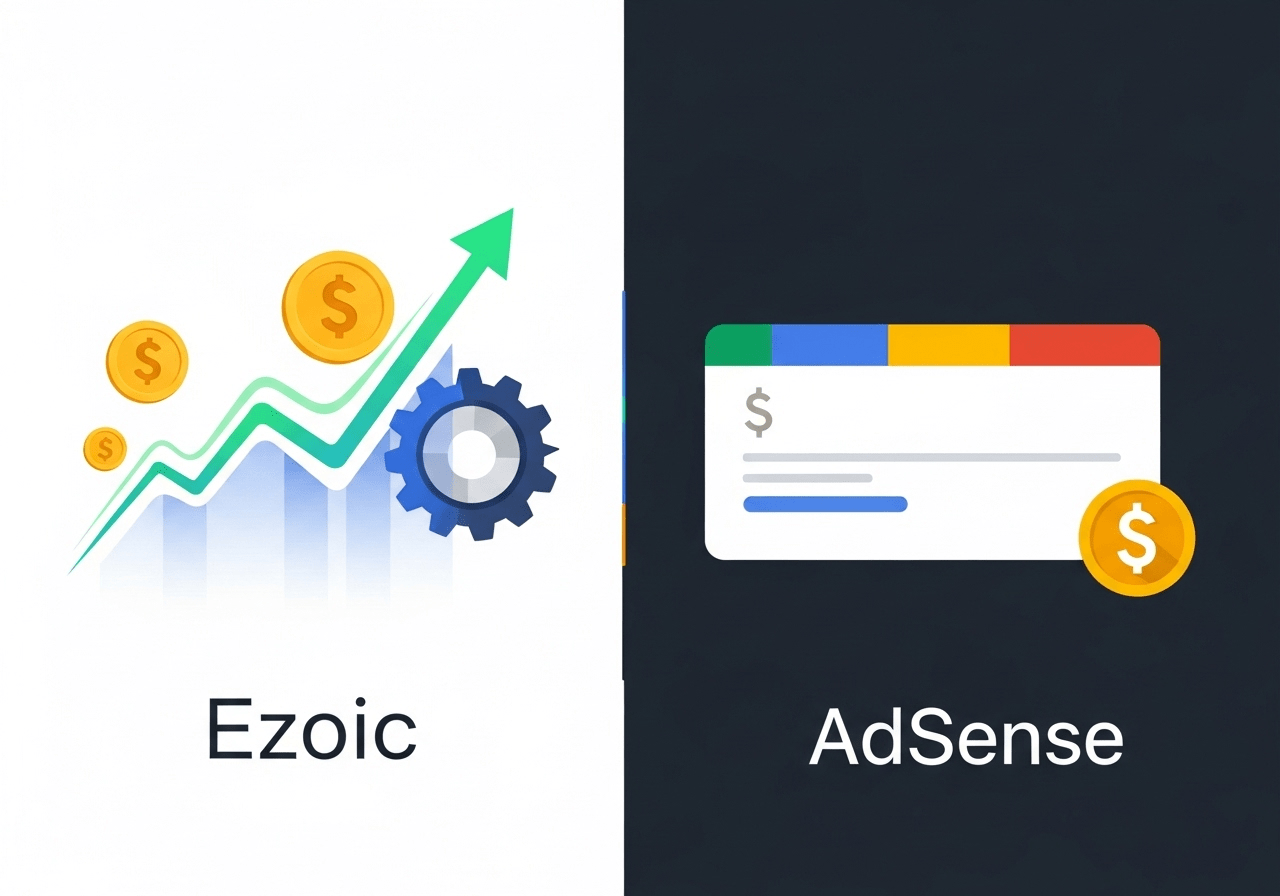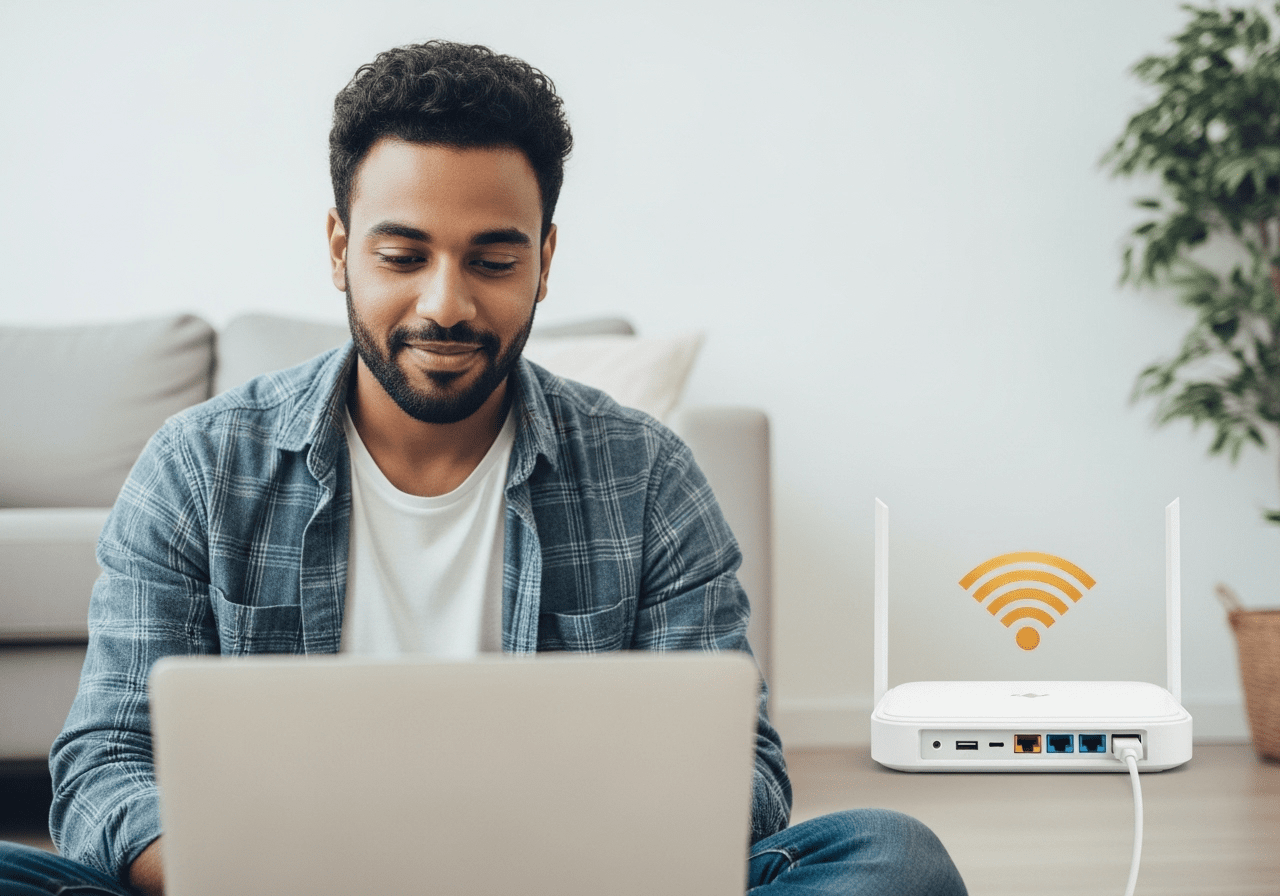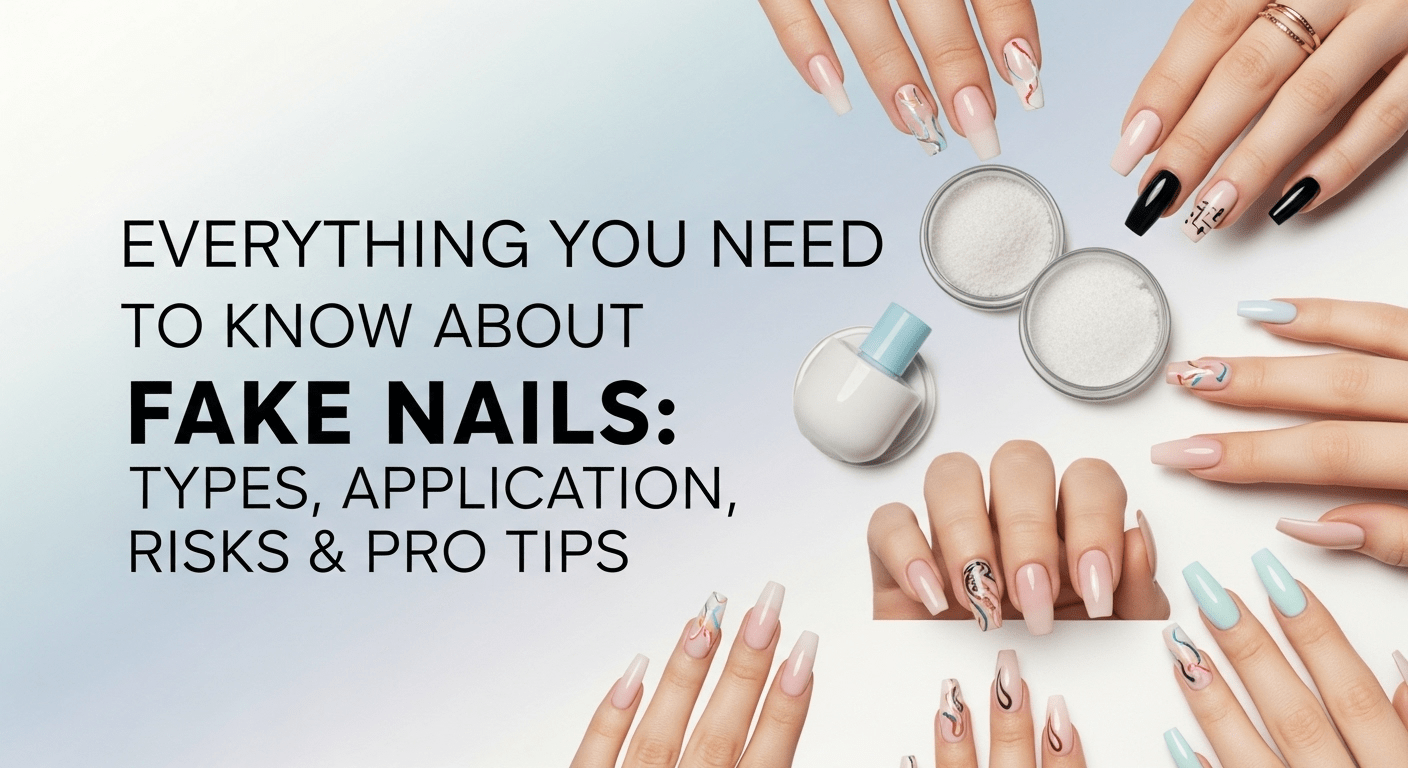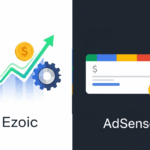Digital detox is no longer a trendy phrase; it’s a necessity for anyone seeking mental clarity, productivity, and a balanced lifestyle. In today’s world, where screen time dominates our waking hours, taking intentional breaks from digital devices can restore both mental and physical health. Whether you’re constantly scrolling social media or overwhelmed by endless notifications, it’s time to learn how to disconnect to truly reconnect.
Explore more lifestyle wellness tips at GhostGoose Lifestyle.
The Modern Digital Overload
The average person spends over 7 hours a day staring at screens, according to data from Statista. Smartphones, laptops, smartwatches, and tablets have become integrated into nearly every task — from work and social interaction to entertainment and even relaxation. But what does this constant connectivity cost us?
Digital fatigue is real. It leads to decreased attention span, poor sleep quality, increased anxiety, and even physical ailments like eye strain and posture-related injuries. The need for a digital detox is greater than ever.
A 2023 report by Harvard Health emphasized the correlation between excessive screen time and mental health issues, particularly in adolescents and young adults. Our dependency on digital devices may offer short-term convenience, but it’s diminishing our long-term well-being.
Quick Reference Table: Digital Detox Insights
| Question | Key Insight |
|---|---|
| What is a digital detox? | A break from screens to reset focus and reduce stress. |
| Why is it needed today? | Overexposure to screens harms sleep, focus, and mental health. |
| Signs you need a detox | Anxiety without phone, poor sleep, mindless scrolling, lack of focus. |
| Key benefits | Better sleep, mental clarity, lower stress, stronger relationships. |
| Detox duration | Start with hours, build to days or weeks depending on your lifestyle. |
| Can tech still be used? | Yes, for essential use only (e.g., calls, maps, emergency contact). |
| Easy detox challenges | 24-hour phone-free day, social media cleanse, notification blackout. |
| Tools to support detox | Forest, Moment, Screen Time apps to track and manage screen use. |
| Post-detox balance | Create tech-free zones, schedule screen time, reassess habits often. |
| Impact on sleep | Less blue light improves melatonin production and sleep quality. |
| Stress reduction | Digital breaks lower cortisol and improve emotional control. |
| Where to learn more | GhostGoose Lifestyle, Harvard Health, Psychology Today. |
Signs You Might Need a Digital Detox
Recognizing when you’re digitally overloaded is key. You might need a digital detox if:
- You feel anxious when your phone isn’t nearby.
- You check your device the moment you wake up and right before bed.
- Your sleep is disturbed due to late-night screen use.
- You scroll without purpose, often losing track of time.
- You struggle to focus on tasks without reaching for a screen.
These behaviors, while common, can become serious obstacles to personal growth, mindfulness, and emotional health.
Benefits of a Digital Detox
Taking a break from screens isn’t about abandoning technology; it’s about using it intentionally. Here’s what happens when you start your digital detox:
Mental Clarity and Focus
Stepping away from screens gives your brain the space to breathe. Without the constant barrage of notifications and stimuli, your mind naturally calms down. This enhances focus, creativity, and emotional resilience.
Better Sleep
Blue light from screens disrupts melatonin production. Turning off devices 1–2 hours before bed significantly improves sleep quality, as confirmed by Sleep Foundation.
Stronger Relationships
Time spent in real-world interaction deepens bonds. A digital detox can help you reconnect with loved ones and build more meaningful relationships.
Reduced Stress
Digital detoxing has been shown to reduce cortisol levels — the stress hormone — by as much as 20%, according to studies shared by Psychology Today.
How to Start Your Digital Detox

Starting a digital detox doesn’t mean throwing your phone away. It’s about creating mindful boundaries. Here are some practical steps:
1. Set Clear Intentions
Ask yourself: Why do I want to do a digital detox? Maybe it’s to sleep better, reduce anxiety, or be more present. Having a clear goal keeps you motivated.
2. Identify Your Triggers
Are you scrolling to avoid boredom or checking email out of habit? Noticing your patterns will help you interrupt them.
3. Designate Tech-Free Zones
Make your bedroom, dining area, or even one full day each week tech-free. This reduces temptation and creates space for offline activities.
4. Use Apps to Monitor Usage
Ironically, some apps can help you detox. Tools like Forest, Moment, and Screen Time allow you to track and limit screen usage effectively.
5. Replace, Don’t Just Remove
Use the time you’d normally spend online for other enriching activities: reading, journaling, cooking, exercising, or simply resting.
Digital Detox Challenges You Can Try
If you’re motivated by structure, consider taking part in digital detox challenges:
– 24-Hour Phone-Free Day
Spend an entire day without touching your phone. Inform friends in advance and embrace the silence.
– Social Media Cleanse
Uninstall social apps for a week. Focus on in-person interaction and self-reflection.
– Notification Blackout
Disable all non-essential notifications for a set period to regain control over your attention.
These challenges are ideal for gradually building healthier habits with your devices.
Maintaining Balance After a Detox
Once you’ve completed a digital detox, maintaining balance is crucial. Reintroduce technology slowly. Ask yourself: Is this usage productive, necessary, or just a habit?
Try these ongoing habits:
- Schedule screen time instead of defaulting to it.
- Keep your phone out of the bedroom.
- Regularly evaluate your digital habits.
The goal isn’t perfection — it’s awareness. Staying intentional with your tech use leads to a sustainable, healthy lifestyle.

A digital detox is more than just a break — it’s a lifestyle shift. In a hyperconnected world, choosing disconnection can be an act of self-respect and empowerment. You don’t need to be perfect. Just start somewhere — even 10 minutes a day offline can make a difference.
For more mindful living inspiration, explore GhostGoose Lifestyle or read expert advice on Psychology Today and Harvard Health.
Frequently Asked Questions (FAQ)
Digital Detox, Mental Wellness, Screen Time Habits
What is a digital detox?
A digital detox is a planned break from using digital devices
like smartphones, computers, or tablets. The goal is to improve
mental focus, reduce screen-related stress, and find balance
in an overly connected lifestyle.
Why is a digital detox necessary today?
Most people spend over 7 hours a day in front of screens.
This leads to fatigue, sleep disruption, and mental overload.
A digital detox helps you reset, regain control, and
live more intentionally with technology.
How do I know if I need a digital detox?
Common signs include anxiety without your phone, poor sleep,
mindless scrolling, and difficulty concentrating offline.
If these behaviors interfere with daily life,
it’s time to step back from screens.
What are the benefits of a digital detox?
Digital detoxing brings clarity, calm, and sharper focus.
It enhances sleep quality, reduces anxiety levels,
and fosters stronger relationships through offline
connections and more present conversations.
How long should a digital detox last?
You don’t need to go off-grid for weeks.
Start with a few hours daily or try a 24-hour break.
Longer detoxes, like a weekend or a week,
can provide deeper emotional and mental reset.
Can I still use technology during a digital detox?
Yes — but be mindful. Limit your device use
to essentials like navigation or emergencies.
Avoid social media, streaming, and email checking
to fully benefit from the detox process.
What are some beginner-friendly digital detox challenges?
Try a phone-free Sunday, uninstalling social apps,
or turning off all non-urgent notifications.
These small steps help retrain your attention
and form healthier digital boundaries.
Are there apps that can help with digital detoxing?
Ironically, yes. Apps like Forest, Moment,
and Apple Screen Time can track and limit use.
They provide clear insights into habits
and help you stick to your detox goals.
How do I maintain balance after a digital detox?
Reintroduce tech slowly with intention.
Set tech-free zones in your home or limit
screen use to scheduled times only.
Reflect regularly on what’s adding value.
Does a digital detox improve sleep?
Yes — especially when devices are turned off
1–2 hours before bedtime. Blue light disrupts
melatonin and delays sleep cycles. A screen break
at night can significantly improve rest quality.
Can a digital detox help with stress and anxiety?
Absolutely. It reduces mental clutter, lowers
cortisol levels, and improves mindfulness.
Even short breaks away from screens help
create emotional calm and space for clarity.
Where can I learn more about digital wellness?
You can find mindful living tips and inspiration
at GhostGoose Lifestyle.
Trusted resources like Psychology Today
and Harvard Health also share expert insights.
